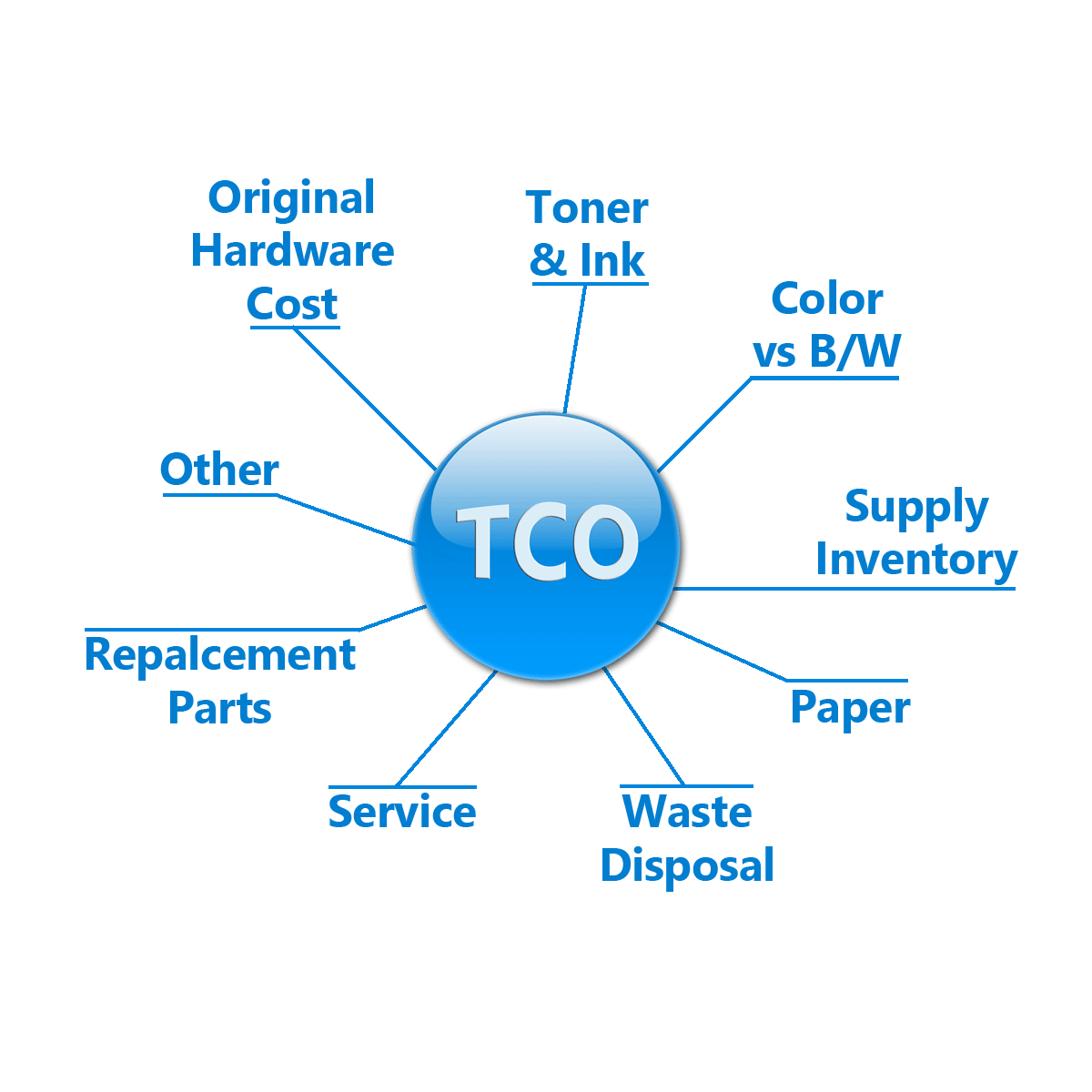TOTAL COST OF OWNERSHIP
The hardware that your office relies on – your digital copiers and printers – are an essential part of your business. They probably represent a significant portion of your ongoing operational expenses – typically 1-3% of revenue on average, according to industry experts. There are significant advantages to properly evaluating the combined cost of purchasing or leasing the hardware, maintaining it, and purchasing the required supplies.
Taken together, these costs are your total cost of ownership (TCO). Let’s take a more detailed look at the way TCO is determined.
The initial purchase cost of a business printer or copier will likely represent only a fraction, perhaps as little as 10%, of the money you spend on that device over the course of its life. Depending on how you use your hardware, multiple other factors will contribute to the TCO:
Cost of the hardware – Copiers and printers have a wide variety of price points. Those on the lower end of the cost spectrum often will incur high maintenance and supply costs over their lifetimes. Conversely, higher priced devices will often have lower operating costs.
Cost of the toner or ink – In some cases, for certain devices, the highest portion of TCO will go to copier toner or printer ink.
Cost of color vs black & white – color printing and color copying always costs more than black & white. You must consider the amount of each that applies to your work environment.
 Cost of supply inventory – If often makes the most financial sense to stockpile the copier and printer supplies that you know you’ll need. While your supply inventory may include recently purchased or still relevant supplies, after a while you may also find that you’ve paid for – and are stuck with – expired or obsolete items.
Cost of supply inventory – If often makes the most financial sense to stockpile the copier and printer supplies that you know you’ll need. While your supply inventory may include recently purchased or still relevant supplies, after a while you may also find that you’ve paid for – and are stuck with – expired or obsolete items.
Cost of disposal – An environmentally sound office policy is to recycle as much as possible, including toner and ink cartridges.
Cost of paper – Your paper costs will be determined by the amount of printing or copying that your office does, how much paper you purchase in advance, and how much paper is wasted.
Cost of service – Preventative maintenance, while smart, does not always prevent issues from arising. Both internal service calls, from your IT department, and external service calls, from an outsourced technician, cost money.
Cost of replacement parts – As with any piece of office hardware that gets continual use, copier, and printer parts will wear out. Most enterprises will end up keeping their hardware beyond the expiration of the manufacturer supplied warrantee.
Other costs – TCO will always include other, harder to determine costs, such as energy use, employee productivity, and costs associated with your network infrastructure.
When all costs are accounted for, the TCO of any single piece of copying or printing hardware can be surprisingly high. For multiple devices across an enterprise, the costs will be even steeper.
Return to the Tech Trends Newsletter

